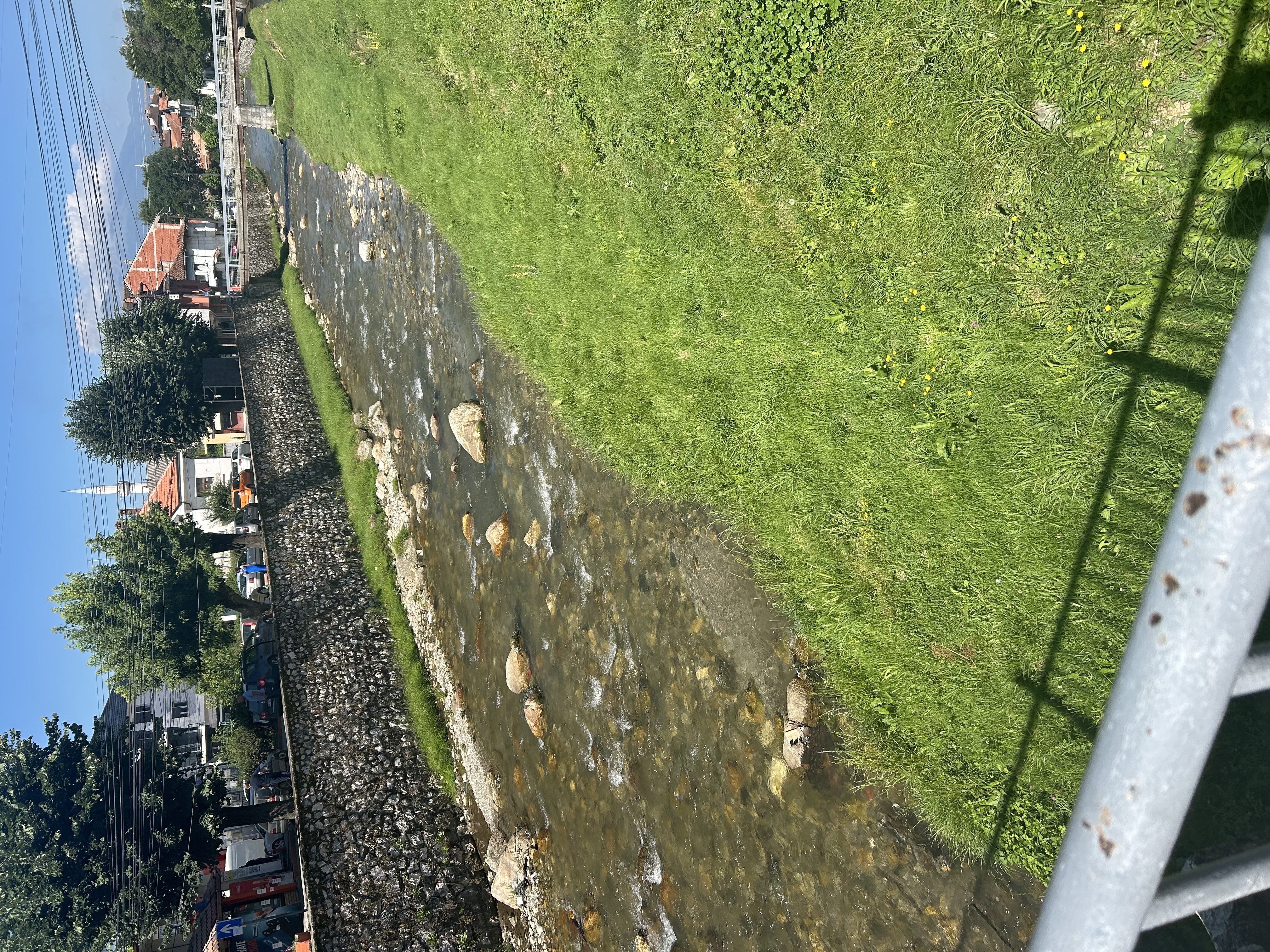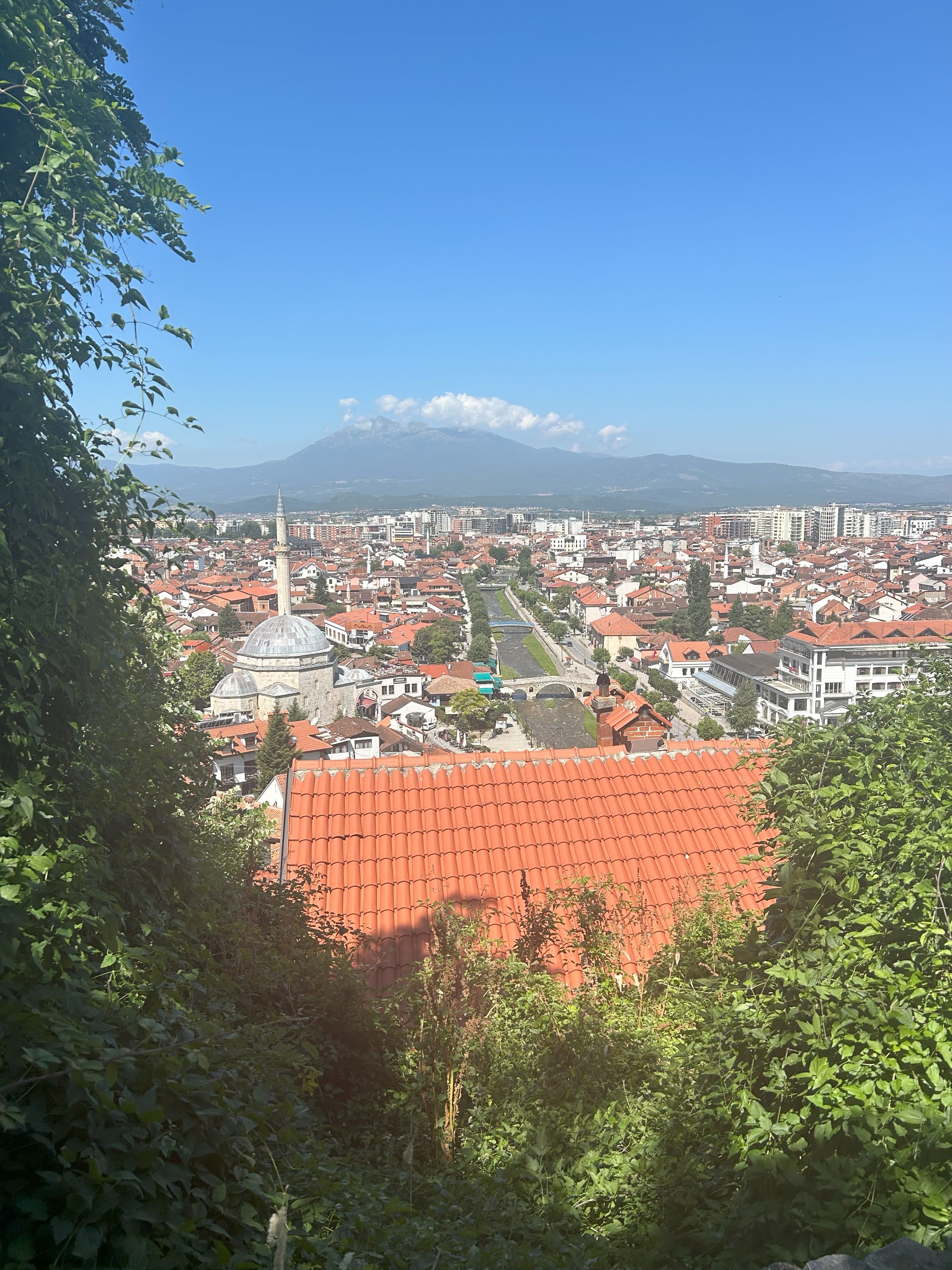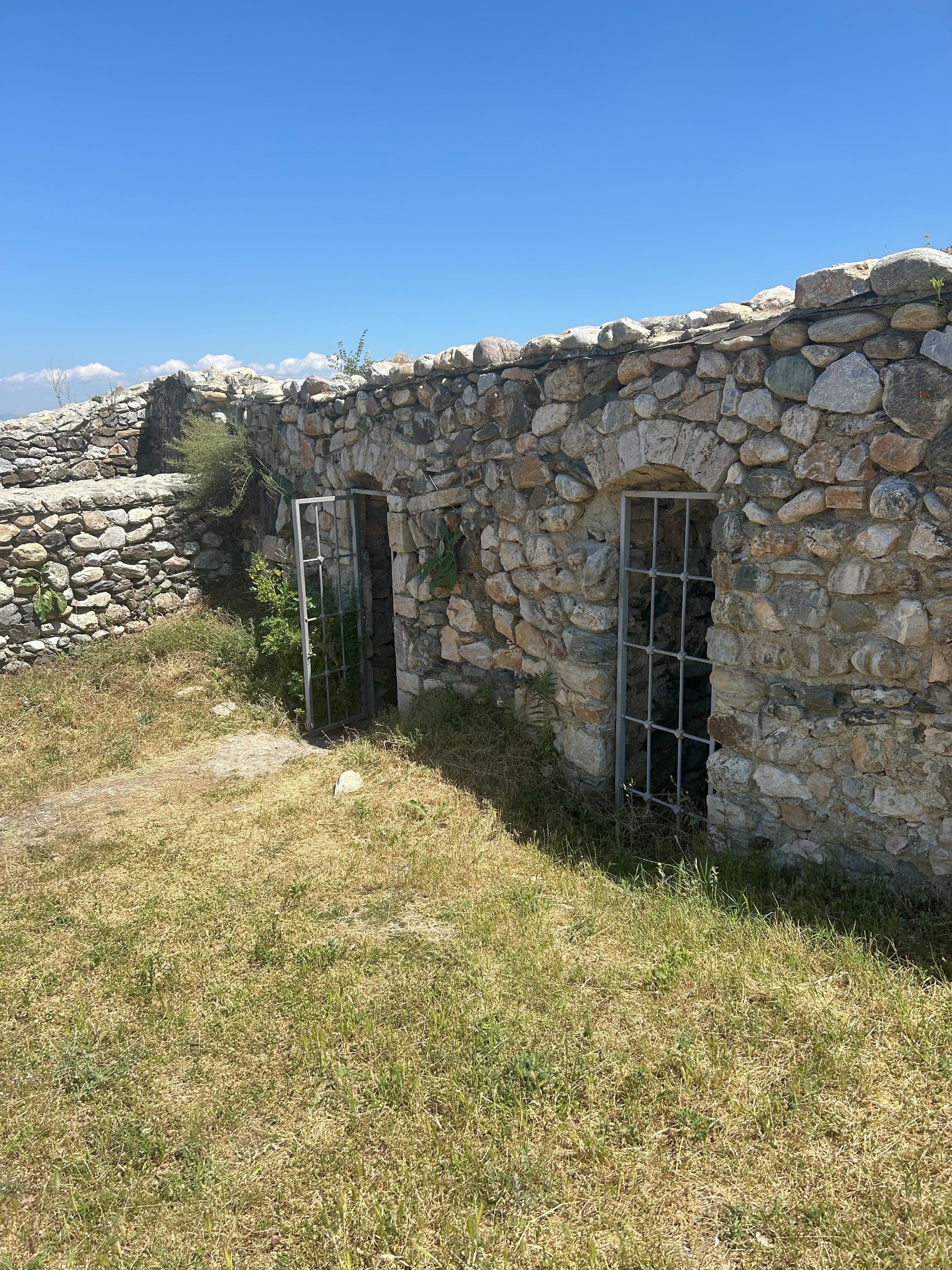Ku Jemi Ne? ("Where Are We?")
This week, Katie and I traveled to Prizren, which has the most preserved Ottoman buildings of any town in Kosovo. It retains several Turkish language features from street signs to radio stations and newspapers. While Prizren escaped some of the destruction from the 1998-99 war, it suffered severe damage during the March 2004 riots.

Getting to Prizren from Pristina is very easy. We walked to the Pristina bus station, went inside, and were directed to which number bus would be the next to leave for Prizren. However, when we settled ourselves on the bus, we realized we were unsure we had picked the correct stall. Since one doesn't need to buy tickets before getting on the bus (like the local buses, an attendant will come around and collect your fare), we were confident when someone came to gather the fees, we could reaffirm we were headed the right way. However, the bus started off before the tickets were bought. Katie & I figured we could only be heading to Prizren, Peja or Gjakova and we would just make the weekend out of wherever we ended up. Luckily, we had selected the correct bus to Prizren and learned to be sure of what bus you're getting on before doing so!
The ride itself was very pleasant, air conditioned, and filled with Albanian rock music over the speakers. The hour and a half drive took us pass rolling hills covered in greenery, pens of sheep and cows, miles upon miles of grassland and fields of crops. Along the roadway, there are various UCK memorials. The UCK is the Kosovo Liberation Army, a mostly ethnic Albanian paramilitary group that had its origins in resisting Yugoslav rule which later fought against Serbia in the late 1990s. When NATO intervened in 1999, it did so on UCK's behalf. The memorials we passed were elaborate stone plaques with the carved names and faces of those the UCK considers martyrs. Every memorial I have seen since being in Kosovo has been immaculately cleaned, cared for, and covered in fresh flowers. I cannot convey how deeply ingrained in the present population is the memory of war and the destruction done. There is not one block in this whole country that was untouched by these events.
Once we arrived, we walked down to the river which is lined with cafes and trees. Knowing it was going to reach up to 80s-90s degree weather by mid-morning, Katie and I elected to tackle the climb to the Prizren Fortress first. The traditional path forward was under construction and while we attempted to follow the signs, we quickly realized we had no GPS. Luckily, the people in Prizren are as friendly as those in Pristina and homeowners came outside to help us find our way up. We stopped by the ruins of an old Orthodox church which is being reconstructed, spoke with a very friendly officer, and then finally reached the summit.

The Prizren Fortress (Kalaja e Prizrenit) is a 6th century fortification that has been habituated at least since the Bronze Age. The Byzantine, Serbian, and Ottoman empires used and expanded the fortress throughout the centuries. We walked through the reconstructed pathways, tunnels, and scenic views. We were able to take some amazing pictures overlooking the whole of Prizren. Like many places in Kosovo, there have been archaeological excavations of the fortress over the last few decades and the government has invested resources into reconstructing the fortress as an educational exhibit. We saw a summer school group of elementary students stopping at various signs and displays (and the ice cream stand as well, of course).

International Legal Research:
My main task at the Academy is to take a look at the existing legal research techniques and compare them with typical techniques taught in the United States. One obvious difference is for U.S. rulings and statutes, we have access to Westlaw, Lexis, and Bloomberg Law. These databases contain not only the latest information on major case law but analysis and categorization from staff attorneys. While one still needs to spend time creating the best search terms possible, relevant case law is usually linked together through various pathways.
No such database exists for the rulings of the European Court of Human Rights, the Inter-American Court of Human Rights, the International Criminal Court, or the International Court of Justice. Each maintains its own separate archive of case law and relevant documents but the search functions vary wildly between archives. The Academy works to have up-to-date laws and relevant precedents for its trainings utilizing new or updated Kosovar laws, European Union standards, and mainly European Court of Human Rights rulings. Kosovo has worked hard to keep its laws in alignment with European Union and Council of Europe standards and while Kosovo is not a member of either, it routinely incorporates new conventions and rulings into its own Constitution and statutes.
I was asked to construct a scientific methodology for new legal researchers that could be used as a training manual or handbook for future reference. I started by going through the resources given to me by my legal writing and research professor and the law librarians at William & Mary. Professor Hendrickson provided our section with a myriad of practical tips and guidelines for legal writing. The law librarians, especially Professor Devon Orr, had led my section through various research scenarios and I knew to also start going through the practical guides in our databases.
Once I had an outline drawn up for what information would be necessary, I separated the topics into four stages: planning, execution, monitoring, closure. Each stage was broken down into step-by-step instructions, practical tips, examples of possible scenarios and solutions, and useful worksheets. For example, planning a new training should include questions such as: "Who is my audience?"; "What should the finished product format be?"; "Who should I consult if difficulties arise?"
For closure, I'm creating two types of research logs so any legal research could be appropriately cited, continued if left off, updated if changed, or picked up by another researcher if necessary. In practical tips, I also recommend keeping a log of special keys or search terms for specific databases since in international legal research, each database or resource bank will operate separately and it would be time-consuming for each researcher to learn each database every time they begin a new project.
Finally, once the manual is completed, I will begin working on a mini test research project for myself to work out anything I may have missed or could be improved. I haven't decided on a topic yet but the conference on cybercrime was so interesting that I may want to look into cybersecurity-related laws.